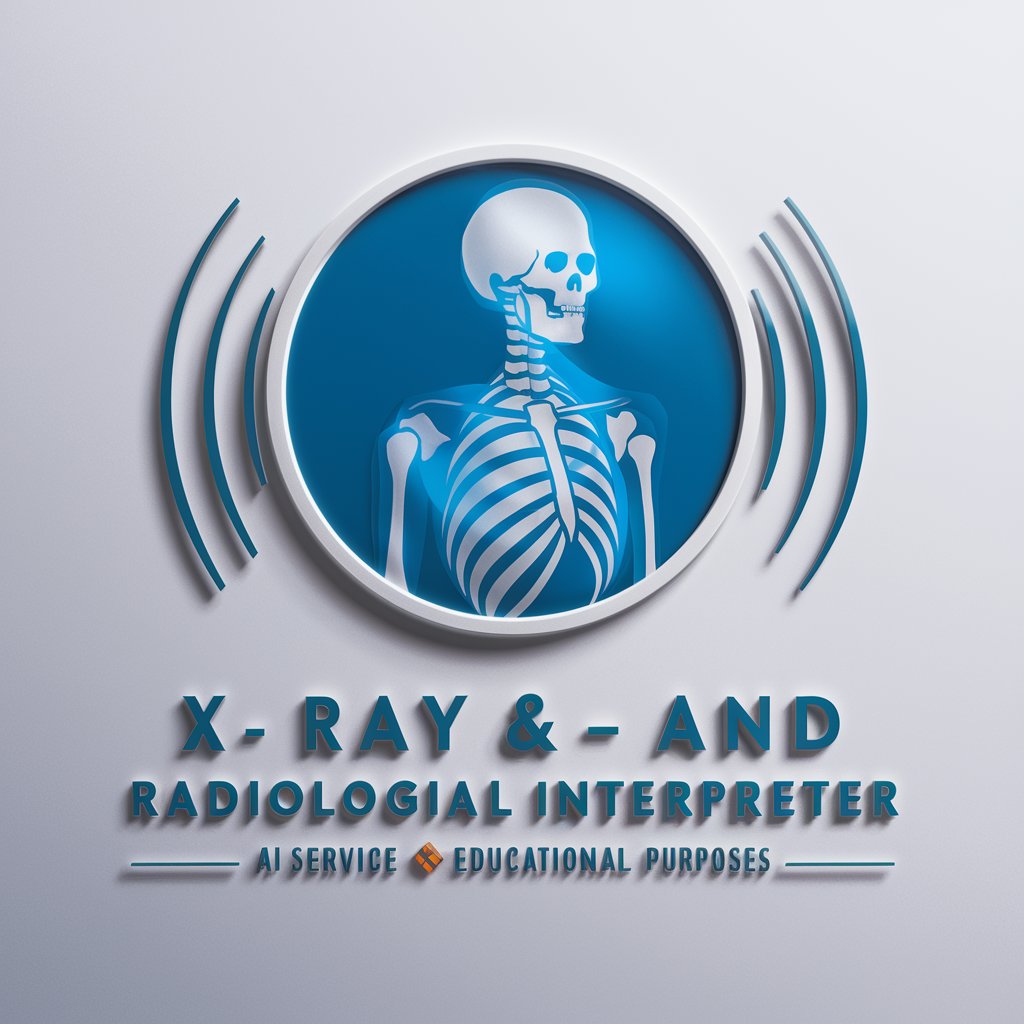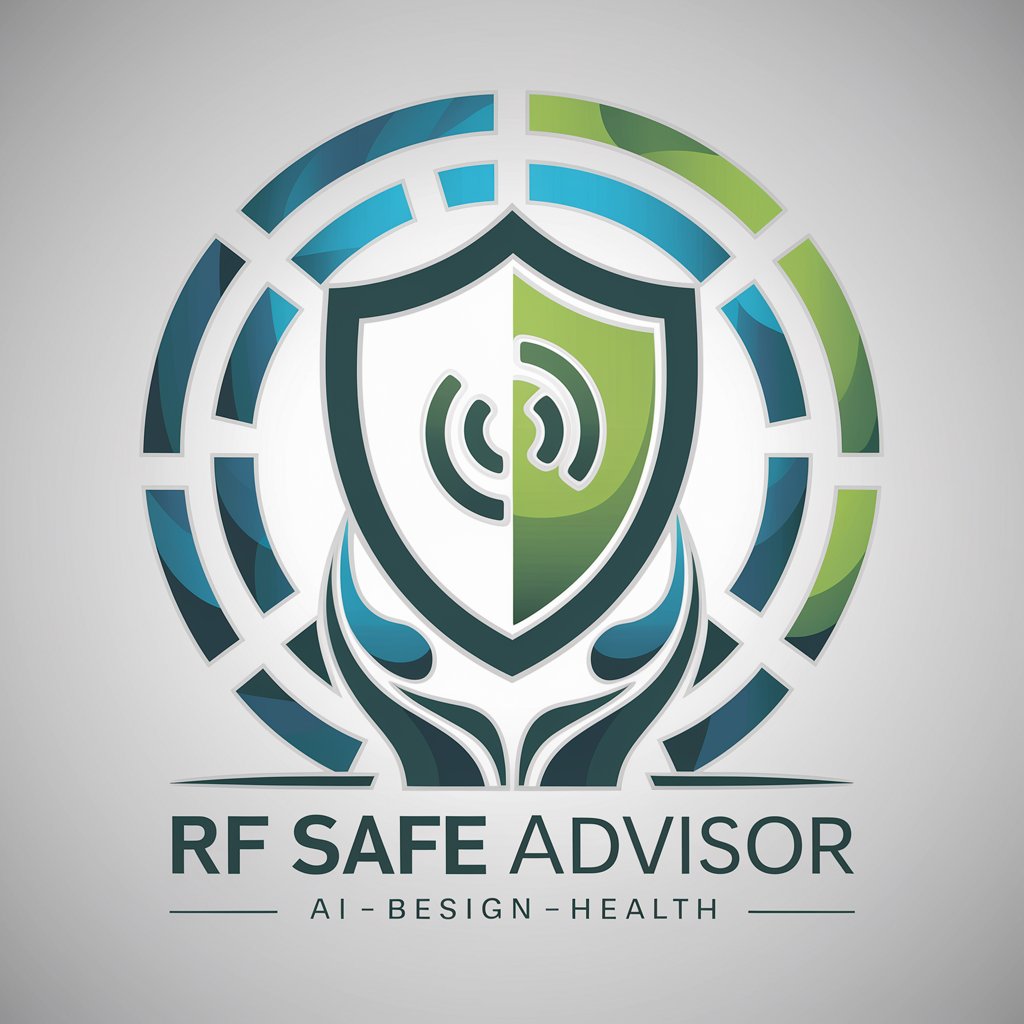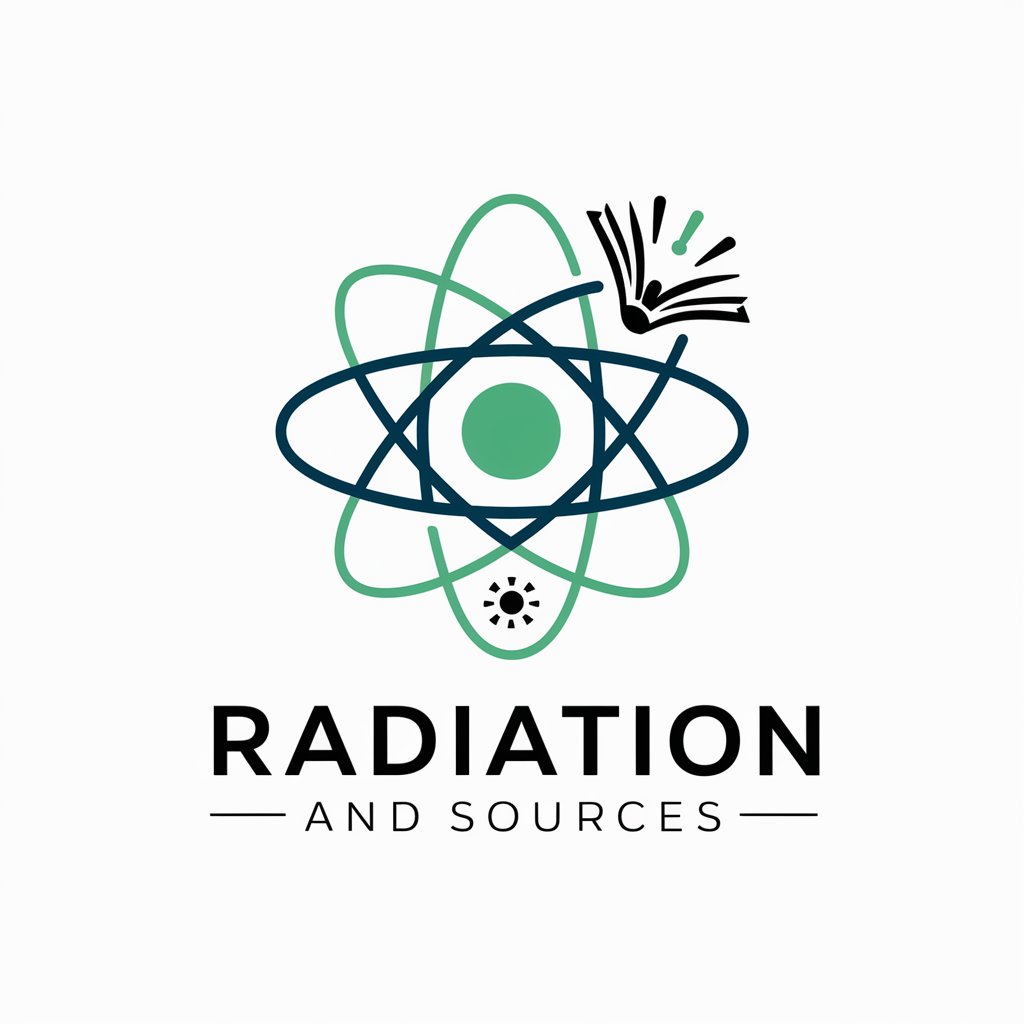
Radiation - Radiation Insight and Guidance
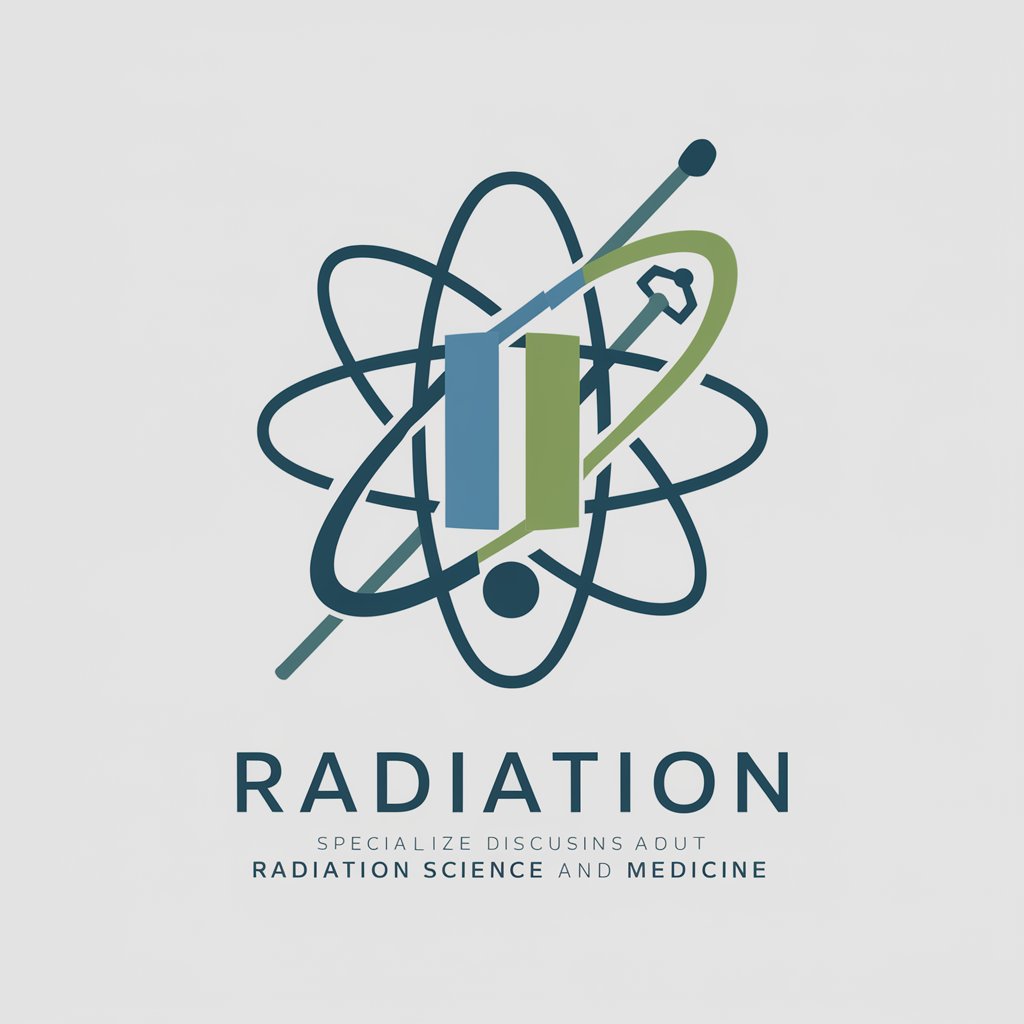
Hello! Let's explore the world of radiation together.
Empowering with AI-driven radiation knowledge.
Can you explain the differences between ionizing and non-ionizing radiation?
How is radiation therapy used to treat cancer?
What are the safety measures for working with nuclear energy?
What are the environmental impacts of radiation exposure?
Get Embed Code
Introduction to Radiation
Radiation is a specialized GPT designed for in-depth discussions and information dissemination regarding radiation in its various forms and contexts. It is tailored to address the scientific, medical, and practical aspects of radiation, ranging from theoretical foundations to applied technologies and health implications. This model is built to serve as a comprehensive resource for understanding different types of radiation (ionizing and non-ionizing), their mechanisms, effects on living organisms, applications in medical treatments (like radiation therapy), nuclear energy production, safety protocols, and environmental impacts. Examples of its functionality include elucidating the principles of radiative energy transfer, explaining the safety measures required in nuclear power plants, and detailing the procedure and effects of radiation therapy in cancer treatment. Powered by ChatGPT-4o。

Main Functions of Radiation
Educational Resource
Example
Explaining the difference between alpha, beta, and gamma radiation and their respective penetration abilities and safety measures.
Scenario
Used by students and educators in academic settings to deepen understanding of nuclear physics concepts.
Healthcare Guidance
Example
Detailing protocols and precautions for radiation therapy in cancer treatment, including side effects and aftercare.
Scenario
Utilized by patients undergoing radiation therapy or healthcare professionals seeking to inform patients about treatment procedures.
Safety Consultation
Example
Providing guidelines for radiation protection and safety measures in environments exposed to radioactive materials.
Scenario
Employed by professionals in nuclear energy sectors, radiography, and industries involving radioactive materials to ensure safety and regulatory compliance.
Environmental Analysis
Example
Assessing and discussing the impact of radioactive pollution and nuclear accidents on ecosystems and public health.
Scenario
Consulted by environmental agencies, researchers, and policy-makers for managing and mitigating radiation-related environmental risks.
Ideal Users of Radiation Services
Students and Educators
Individuals engaged in learning or teaching physics, chemistry, environmental science, or medical subjects related to radiation. They benefit from Radiation's detailed explanations, educational support, and resources to enhance their understanding and teaching methodologies.
Healthcare Professionals
Oncologists, radiologists, medical physicists, and nursing staff involved in diagnostic imaging and radiation therapy. They use Radiation to clarify treatment modalities, understand radiation safety, and improve patient communication and care.
Safety Officers and Regulatory Bodies
Personnel responsible for enforcing radiation safety standards and regulations in workplaces, such as nuclear power plants, hospitals, and research facilities. They benefit from Radiation's guidance on best practices, safety protocols, and regulatory compliance.
Environmental Scientists and Policy Makers
Individuals studying or managing the environmental impacts of radiation and radioactive materials. They utilize Radiation for insights into ecological effects, pollution control strategies, and informed decision-making on public health and safety policies.

How to Use Radiation
Begin Your Journey
Start by accessing a free trial at yeschat.ai, where you can explore features without the need for signing up or subscribing to ChatGPT Plus.
Identify Your Needs
Determine the specific radiation-related topics you need assistance with, such as medical radiation therapy, nuclear energy, or radiation safety.
Engage with Radiation
Utilize the chat interface to ask detailed questions about radiation, including its types, effects, applications, and safety guidelines.
Apply the Insights
Implement the guidance and information received in your academic, professional, or personal projects related to radiation.
Feedback and Learn
Provide feedback on your experience and continue exploring different aspects of radiation for continuous learning and application.
Try other advanced and practical GPTs
RECORD
AI-powered post-accident guidance.

F1 Smooth Operator
Your AI-powered F1 pitwall strategist.

NoshInNoTime
Tailoring your taste, nourishing your needs.

BedGPT
Empowering Your Hosting Experience with AI

Sveltekit + Supabase Assistant
Empowering developers with AI-driven SvelteKit and Supabase integration support.

Ski Coach Pro
Elevate your skiing with AI-powered coaching.

Herbs
Unleash Nature's Power with AI

Heavy Machinery
Expert advice at your fingertips

APA Assistant
Streamlining APA formatting with AI.

Science Explorer
Empowering your science journey with AI.

HydroTech Pro
Empowering engineering with AI-driven insights
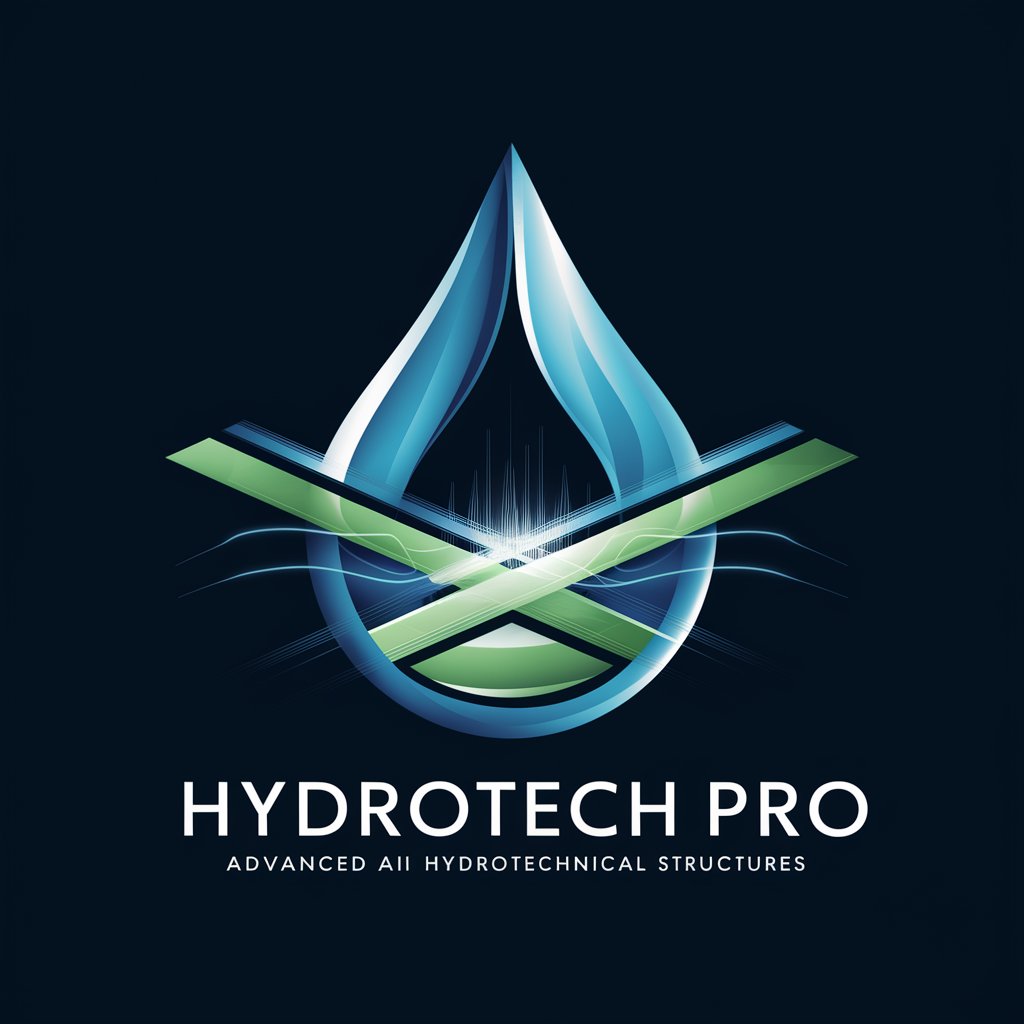
shortsCopilot
Elevate Your Content with AI

Detailed Q&A about Radiation
What is the difference between ionizing and non-ionizing radiation?
Ionizing radiation has enough energy to remove tightly bound electrons from atoms, thus creating ions, and can include types such as X-rays and gamma rays. Non-ionizing radiation lacks this energy and includes forms like ultraviolet light, visible light, and radio waves.
How is radiation used in medical treatment?
Radiation therapy, or radiotherapy, uses high-energy radiation to shrink tumors and kill cancer cells. It targets cancerous cells with minimal impact on surrounding healthy tissue, and can be delivered externally or internally.
What measures are taken to ensure radiation safety in nuclear plants?
Nuclear plants employ numerous safety measures, including containment structures to prevent radiation leakage, multiple cooling systems to avoid overheating, and strict regulatory oversight to ensure the safe operation and maintenance of the facilities.
How does radiation affect the environment?
Radiation can affect the environment through contamination of air, water, and soil, impacting wildlife and ecosystems. Long-term exposure can lead to genetic mutations and affect the health of living organisms.
What are the applications of radiation in non-medical fields?
Beyond medicine, radiation has applications in energy production (nuclear reactors), food preservation (irradiation to kill bacteria), scientific research (particle physics experiments), and industrial processes (non-destructive testing and material analysis).
